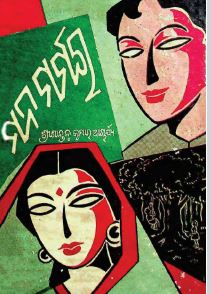In the rich tapestry of Odia literature, few works stand out as poignantly as “Mana Marmara,” a timeless classic written by the eminent author Santanu Kumar Acharya and published in 1962. This remarkable book is not just a simple narrative; it is a profound exploration of human emotions, relationships, and the complexities of life.
“Mana Marmara” translates to “The Secrets of the Heart,” and this title encapsulates the essence of the book perfectly. Acharya’s storytelling delves deep into the psyche of his characters, unraveling the layers of their emotions, dreams, and struggles. The narrative is woven with exquisite sensitivity, making each character relatable and real, which is a testament to Acharya’s masterful writing.
At the heart of “Mana Marmara” is a collection of interconnected stories that bring forth the diverse facets of human existence. Each story, while unique, is tied together by a central theme of love, longing, and the intricacies of interpersonal relationships. The stories range from poignant tales of unrequited love to the struggles of familial bonds and societal expectations. Acharya skillfully captures the essence of Odia culture, reflecting its traditions, values, and challenges, making the characters and their dilemmas feel both intimate and universal.
One of the standout stories in the collection revolves around a young couple torn apart by societal pressures and familial obligations. Their love, which blossoms amidst adversity, is depicted with such depth and authenticity that readers cannot help but empathize with their plight. Acharya’s ability to convey the emotional turmoil faced by individuals caught between personal desires and societal norms resonates deeply with readers, creating a rich tapestry of empathy and understanding.
In another compelling narrative, a mother’s unwavering love for her child is depicted amid the harsh realities of life. Her sacrifices and the depth of her affection serve as a poignant reminder of the selfless nature of parental love. This story not only highlights the bond between mother and child but also addresses themes of resilience and hope in the face of adversity.
The language used in “Mana Marmara” is both lyrical and accessible, illustrating Acharya’s deftness as a wordsmith. He employs a blend of colloquial and poetic language, which adds to the authenticity of the characters and their experiences. The vibrant descriptions of the landscapes, festivals, and the everyday lives of the people further enrich the narrative, transporting readers into the heart of Odisha.
What sets “Mana Marmara” apart is not only its engaging plots but also the underlying philosophical reflections that accompany the stories. Acharya invites readers to ponder the deeper meanings of love, sacrifice, and the quest for self-identity amidst societal constraints. His narratives provoke thought and introspection, encouraging readers to reflect on their own lives and relationships.
In conclusion, “Mana Marmara” by Santanu Kumar Acharya is an exquisite compendium of stories that capture the essence of human emotions and the complexity of life. Its publication in 1962 marked a significant moment in Odia literature, and its relevance continues to resonate with readers today. As we delve into the pages of “Mana Marmara,” we embark on a journey through the heart, exploring the myriad emotions that define our existence. This book is not just a literary work; it is a celebration of life, love, and the enduring human spirit.
Books Info
| Books name | Mana Marmara/ମନମର୍ମର |
| Editor | Santanu Kumar Acharya |
| No Of pages | 263 |
| Publisher | Cuttack student Store |
| Publication | 1962 |
| Printed At | Pratikshyalaya Press |
| Distributor | NA |

